by Dr. M | Mar 4, 2024 | Dry Eye, Education
Tears are an essential part of your eye’s health. Your eyes will not function properly, and you can experience significant discomfort if you don’t have a proper supply of tears. You may have complained to your eye doctor that your eyes are running, but they say you have dry eyes. How you have dry eyes if you have an excess of tears?
Not all tears are created equal. While commonly linked to feelings of sadness or joy, tears are much more than mere indicators of emotional states. They play a crucial role in eye health and vision. Tears can be categorized into three distinct types: basal, reflex, and emotional. Each type has unique compositions and functions, highlighting the complex nature of this seemingly simple feature of the human body.
1. Basal Tears: The Essential Eye Protectors
Basal tears are the unsung heroes of our daily lives. They are continuously secreted to keep the eyes lubricated without you even thinking about it. These tears form a thin, protective layer over the cornea, which is essential for nourishing our eyes and keeping them moist and safeguarded from dust and other irritants.
Basal tears consist of three layers: an oily layer, a watery layer, and a mucous layer. The oily layer, produced by the meibomian glands, prevents evaporation of the tear film. The watery layer, produced by the lacrimal glands, hydrates and nourishes the cornea. And the mucous layer helps the tears adhere to the eye’s surface.
Our eyes become dry and uncomfortable without basal tears, leading to dry eye syndrome. A scratchy or sandy feeling is typical when deficient in basal tears. They also serve an essential function in maintaining a clear vision. Your vision can blur as your car windshield blurs with old wiper blades. Each blink spreads basal tears across the eye’s surface, providing a smooth optical surface critical for sharp vision.
2. Reflex Tears: Nature’s Response to Irritants
Reflex tears are produced in response to irritants in the eyes. These include substances like onion vapors, smoke, or even a strong gust of wind. Their primary function is to flush out these irritants and protect the eye from harm. Reflex tears are released in larger quantities than basal tears and contain significantly more antibodies to help fight bacteria and other pathogens that might enter the eye. But they contain less nourishment than basal tears, leading to a diagnosis of dry eye when you have an excess of tears.
This type of tear is produced by the same lacrimal glands that produce basal tears but are triggered by a different mechanism. When an irritant is detected, a reflex arc involving the nerves of the eyes and the brain is activated, producing these types of tears.
3. Emotional Tears: The Tears of Feelings
Emotional tears are perhaps the most intriguing and unique of the three types. Triggered by various emotions, from deep sadness and grief to extreme joy and relief, these tears contain a chemical makeup different from basal or reflex tears. Studies have found that emotional tears contain higher levels of stress hormones, such as adrenocorticotropic hormone (ACTH), and neurotransmitters like leucine enkephalin, an endorphin that reduces pain.
The purpose of emotional tears is still a subject of research and debate. Some theories suggest that they help to soothe and regulate intense emotions, possibly by releasing these hormones. Others believe that crying has evolved as a social signal, conveying vulnerability and fostering human empathy and social bonds.
Conclusion
Tears and the pathology of tears are much more complicated than expected. The study of tears, from their chemical composition to their psychological and social implications, is a fascinating field that bridges biology, psychology, and sociology. The three types of tears – basal, reflex, and emotional – each serve distinct and vital functions. They protect our eyes, clear them of irritants, and help us to express and process our deepest emotions. Any breakdown of the production, distribution, or function of tears can cause discomfort, blurred vision, and, in severe cases, damage to the eye.
by Dr. M | Mar 19, 2020 | LASIK, Procedure, Surgery
LASIK is all in the family for brothers Andy & Gary, who both had LASIK with Dr. Moran on the same day!
We had to capture the moment, because it was a first for Dr. Moran. Although he has done LASIK on members of the same family, it was the first time in 20 years that he had a set of brothers together on the same surgery schedule.

Older brother Andy scheduled a free LASIK consult to see if he was a candidate for LASIK. He provided the inspiration for his brother Gary to make an appointment to see if LASIK was right for him. Although the brothers had different prescriptions, they both were excellent candidates. So it made sense for Andy to go first, Gary followed twenty minutes later!
sisipisi.ccsisipisi.ccsisipisi.ccsisipisi.ccsisipisi.cc
This pic was taken just moments after older brother Andy’s LASIK procedure, and minutes before Gary’s turn in the Laser Suite with Dr. Moran. Everyone is smiling…and Gary doesn’t need those glasses any more!
Call our office for your LASIK consult, and bring your brother, sister, cousin, mom or dad! Spend some quality time together, and find out if LASIK is right for your family!
by Dr. M | Mar 12, 2020 | Appointment, Exam, Glaucoma, Mark Moran, Medical Eye Care
As part of your comprehensive eye exam, we check the pressure of your eye, the Intraocular Pressure (IOP). This test, called tonometry, is one way to see if you are at risk for glaucoma. Regular screenings are a simple way to monitor your eye health. Early detection is essential in the treatment of glaucoma, since many times there are no symptoms with increased pressure, unless it is sudden.
UNDERSTANDING EYE PRESSURE:
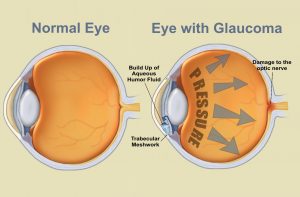
Inside the eye, there is a cycle of fluid production and fluid drainage. This fluid, in the front part of your eye, is called the aqueous humor. The aqueous humor nourishes your eye and helps it to keep its shape. If this cycle is out of balance, and more fluid is produced than can drain effectively, IOP increases. Over time, this increased eye pressure may cause damage to the optic nerve. A general guideline for normal eye pressure is between 10 and 21 mm/hg.
HOW WE MEASURE EYE PRESSURE:
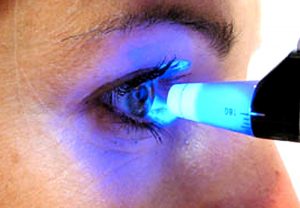 In our office, we measure eye pressure by instilling a drop that numbs your eye. Using a blue light, we then use an applanation tonometer that gently touches the surface of your eye. This painless test is a very effective way of measuring your pressure. It is helpful for the patient to relax and breathe normally while we perform this test.sisipisi.ccsisipisi.ccsisipisi.ccsisipisi.ccsisipisi.cc.
In our office, we measure eye pressure by instilling a drop that numbs your eye. Using a blue light, we then use an applanation tonometer that gently touches the surface of your eye. This painless test is a very effective way of measuring your pressure. It is helpful for the patient to relax and breathe normally while we perform this test.sisipisi.ccsisipisi.ccsisipisi.ccsisipisi.ccsisipisi.cc.
Although there are many other ways of measuring eye pressure, many people are familiar with the “puff of air test”. This test, called non-contact tonometry, uses a rapid air pulse to flatten the cornea. Your pressure is measured by detecting the force of the air against your eye. Although we don’t use this process, often when we ask patients them to “put your chin in the chin rest and forehead against the band” they worry we are going to puff air at them. They don’t seem to like it!
We can’t emphasize enough the importance of comprehensive eye exams. It is especially important to have an eye exam if you have a family history of eye disease, diabetes or high blood pressure. The best way to protect your vision is to come in for an exam, where Dr. Moran will evaluate your risk for disease and advise you of the optimal schedule of visits to protect your eye health.
Schedule your exam today, by calling our office at 610-628-2022, or by filling out the form on the website.
by Dr. M | Feb 4, 2020 | Cornea, Dry Eye, Exam, Medical Eye Care, Sun Damage, Surgery, Vision
There is an eye condition called “Surfer’s Eye”. Can you guess how it got its name?

It’s not about the water…but If you thought it had to do with too much sun exposure, you would be right!
Long-term exposure to UV rays from the sun, as well as wind and dust, may result in growths on the surface of the eye. Surfers are particularly vulnerable, since they spend their time in the sun without sunglasses or other eye protection.
The technical term for growths on the eye caused by sun exposure are called Pinguecula and Pterygium. The condition appears on the eye’s conjuctiva (the clear covering over the white part of the eye.
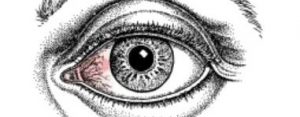 Pinguecula is a yellowish, raised growth on the conjunctiva. It’s usually on the side of the eye near your nose, but can happen on the other side too. A pinguecula is an abnormality formed by protein deposits, calcium or fat. It’s like a callus on your finger or toesisipisi.ccsisipisi.ccsisipisi.ccsisipisi.cc.
Pinguecula is a yellowish, raised growth on the conjunctiva. It’s usually on the side of the eye near your nose, but can happen on the other side too. A pinguecula is an abnormality formed by protein deposits, calcium or fat. It’s like a callus on your finger or toesisipisi.ccsisipisi.ccsisipisi.ccsisipisi.cc.
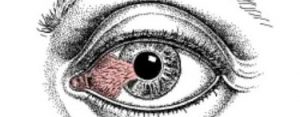
Pterygium (Surfer’s Eye) is a growth of fleshy tissue (has blood vessels). It usually has a triangular shape. It can remain small or grow large enough to cover part of the cornea. When it grows into the cornea, it can interfere with your vision.
Symptoms
The symptoms of pinguecula and pterygium can range from mild to severe. They include:
- redness and swelling of the conjunctiva
- a yellow spot or bump that builds on the white of your eye
- dryness, itching and burning in the eye.
- sensation of something in the eye
Treatment
- The best treatment is prevention…keep your eyes lubricated with artificial tears and wear sunglasses with UV protection.
- If you have the condition, lubricating eye drops will help to reduce discomfort.
- Your doctor can prescribe steroid eye drops which may reduce inflammation, redness and swelling in the eye.
- Surgical Removal: If eye drops alone don’t alleviate the symptoms, or if the growth is large enough to interfere with your vision, the growth can be removed surgically.
Protect your eyes, protect your vision. If you have any questions about caring for your sight, email, call or text our office. We are here to help!
by Dr. M | Dec 30, 2019 | Cornea, Eye Safety, LASIK, Patient Care, Surgery, Vision
How the laser works to improve your vision during LASIK surgery.
LASIK vision correction uses a laser to reshape your cornea to help you see better. To apply the laser treatment, Dr. Moran uses an excimer laser which emits a cool beam of ultraviolet light to precisely remove corneal tissue. The reshaped cornea allows for light rays to focus properly on the retina to give you clearer vision.
 Think of the cornea as a closed book with 500 pages. We create the flap about 100 pages into the book. Once the flap is opened, we apply the laser treatment to correct your vision in the last 400 pages of the book.
Think of the cornea as a closed book with 500 pages. We create the flap about 100 pages into the book. Once the flap is opened, we apply the laser treatment to correct your vision in the last 400 pages of the book.
After your flap is lifted, the excimer laser applies pulses of ultraviolet across the cornea in a custom pattern designed for your eyes. These precise light rays are able to remove as little as 0.25 microns of tissue at a time. How small is a micron? One micron is a thousandth of a millimeter.
How the cornea changeS DUring LASIK
The laser treats your cornea to give you better vision. Your cornea may be too long, too flat, or irregularly shapedsisipisi.ccsisipisi.ccsisipisi.ccsisipisi.ccsisipisi.cc.
- If you are nearsighted, the laser will make the cornea more flat;
- if you are farsighted, the laser will make the center of the cornea steeper.
- If you have an astigmatism, the laser will smooth your corneal tissue into a more symmetrical shape.
- If you have a combination of issues, the laser can treat nearsightedness with astigmatism, as well as farsightedness with astigmatism.
How the treatment is determined
In order to create your treatment plan, Dr. Moran does careful calculations using the data from your pre-operative testing. He takes into account your age and your visual needs. Then, the laser is programmed with your unique measurements. Once programmed, the laser is controlled by computer settings programmed to correct your specific refractive error. We use Custom-Vue Wavescan technology. It is called “Custom-Vue” since the pattern of treatment is customized for each patient to give you the best possible vision.
Dr. Moran will ask you to focus on a light while the laser is being applied. While it is important to keep your eye focused during the treatment, the laser has an added safety feature. The laser uses an eye-tracking system that monitors any eye movements and keeps the laser beam on target during surgery. Studies have shown that eye trackers produce better outcomes and decrease complications. If your eye moves during the surgery, the laser will stay centered. It will track and follow your eye movements.
What to expect After LASIK
 When the laser treatment is done, you will notice clearer vision than when you entered the room. However, your vision will still be a little blurry – similar to seeing under water. The blurriness is because you have a lot of drops in your eyes! Dr. Moran will have you sit up and look across the room at a clock about 10 feet away. You will be able to tell him what time it is, even if you weren’t able to see the clock when you walked into the room. Your surgery day instructions are to go home and keep your eyes closed for the rest of the day. Your vision will fluctuate as your eyes are healing, however, the next day you can drive to the office for your 1-day PO LASIK appointment.
When the laser treatment is done, you will notice clearer vision than when you entered the room. However, your vision will still be a little blurry – similar to seeing under water. The blurriness is because you have a lot of drops in your eyes! Dr. Moran will have you sit up and look across the room at a clock about 10 feet away. You will be able to tell him what time it is, even if you weren’t able to see the clock when you walked into the room. Your surgery day instructions are to go home and keep your eyes closed for the rest of the day. Your vision will fluctuate as your eyes are healing, however, the next day you can drive to the office for your 1-day PO LASIK appointment.
To see if LASIK is right for you, schedule your FREE Consult today. Call, email or text our office for your appointment. Learn more about, just click LASIK
by Dr. M | Aug 23, 2019 | Contact Lenses, Exam, Eyeglasses, Glasses, Mark Moran, Office, Patient Care, Prescriptions, Procedure, Vision
What is the first test we do when you come into the office for a complete vision exam?
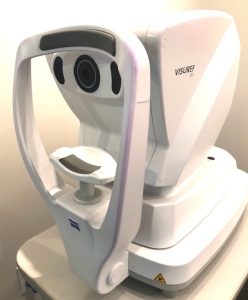
The Autorefractor measures your prescription
We take a measurement of your vision with the AutoRefractor.

Focus on the balloon!
When you take a seat at the autorefractor, we ask you to look into the device. You will see a blurry hot air balloon at the end of a long straight road. As the balloon comes into focus, we measure your prescription.
We ask you to focus on the image (balloon) to keep your eye centered while we take measurements. It only takes just a few seconds to measure using an autorefractor. The balloon is at the center of the image, which aligns your eye perfectly for the test.
When we use this machine, nothing touches your eye, and there is no puff of air!sisipisi.ccsisipisi.ccsisipisi.ccsisipisi.ccsisipisi.cc
The autorefractor provides an objective measurement of a person’s refractive error and prescription for glasses or contact lenses. The device measures how light is changed as it enters your eye.
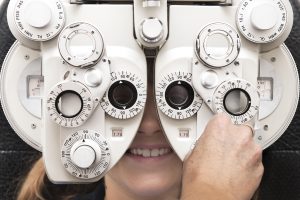
Better 1 or Better 2?
We don’t use the numbers from the device to order your prescription glasses or contacts. The autorefractor is just part of the process. The information from the autorefractor is used as a starting point to determine your best prescription. We take these numbers and dial them into the phoropter.
Here is where your opinion comes in. As we cycle through lenses, we ask, “Is it Better 1 or Better 2?” Your responses help us to pinpoint your best vision. When we show you different choices, we aren’t trying to trick you! We are showing you different options to find your best correction.
Why do we use a balloon photo?
The image isn’t important, but the need to focus on something at a distance is key to a good measurement. The balloon is just one of many visual targets used in the autorefractor. Besides the hot air balloon, other popular images include: a pinwheel/peppermint candy, a house (or barn) at the end of a road, a house in the middle of a field.
FOR MORE INFORMATION CLICK HERE…
by Dr. M | Aug 20, 2019 | Contact Lenses, Cornea, Eye Safety
It’s hard to find someone who doesn’t wear contact lenses, has worn contact lenses in the past, or knows someone who wears contact lenses. The Center for Disease Control (CDC) has declared August 19th to the 23rd contact lens health week. https://www.cdc.gov/contactlenses
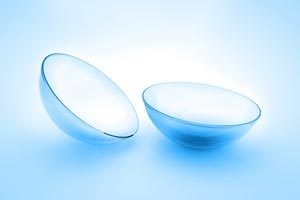
Soft contact lenses
That’s right…the CDC is concerned about contact lenses! Contact lenses are medical devices, just like a heart pacemaker or an insulin pump. Contact lenses have been in use for over 100 years and during that time the technology behind them has progressed and been perfected. For that reason, complications and problems with them are less common. However, that only applies if they are used as prescribed.
Human nature is when you are comfortable with a situation, you may take some shortcuts regarding safety. Because contacts are considered so safe, most contact lenses users are prone to intentionally and unintentionally cut corners. Take the advice of Dr. Tang, Dr. Moran, and the CDC: DON’T TAKE SHORTCUTS!
Here are a few key reminders on handing and wearing your contact lenses.
- Don’t sleep in your lenses.
- Tap water, hot tub or swimming pool water are not good for your contact lenses.
- Wash your hands before handing your lenses.
- Follow your eye doctors instructions for use of your case and disinfecting solutions.
- Replace your contact lenses case every 3 months.
- Replace your contact lenses as prescribed.
- See your eye doctor as recommended.
Contact lenses are safe when used appropriately, but things can go very bad if they are used improperly. You INCREASE your risk of permanent vision loss when you don’t follow the instructions above! Be safe and enjoy your contact lenses: follow the rules.
by Dr. M | Aug 6, 2019 | Cost, Education, Medical Eye Care, Medication, Patient Care, Prescriptions, Uncategorized

Talk to your pharmacist…you’ll be glad you did!
Have you spoken to your pharmacist lately? We know that prescription medications can be expensive. Your pharmacist can help you manage your medications, and may be able to help you find savings on your prescriptions.
Make friends with your pharmacist.
Your pharmacist is an essential part of your healthcare team. They may be aware of resources that can save you money, all you have to do is ask! Ask if you can speak with your pharmacist, they are happy to take a few minutes to review your medications. Most pharmacies have a private place for patient consultations.
Discount PROGRAMS.
Your pharmacist might be aware of discount programs that can save you money. They have a complete list of your medications, so they can can review the list with you. Talk to the pharmacy staff to see if there are any discount plans or strategies that might help you save some money.
ASK YOUR DOCTOR.
Ask your doctor if you there is a generic version of the medication. Generics are less expensive, and have the same active ingredients as the brand-name medications.
We want you to stay on track with the medications that are prescribed for you. The first step toward that goal is making sure that you get the medications that you need to stay healthy.
We know that an informed patient makes the best healthcare decisions, so make sure ask questions! You can benefit from relationships with every member of your healthcare team.
by Dr. M | Jul 25, 2019 | Experience, Eye Safety, Laser, LASIK, Patient Care, Procedure, Surgery
Patients often ask…what happens the day of your LASIK procedure?
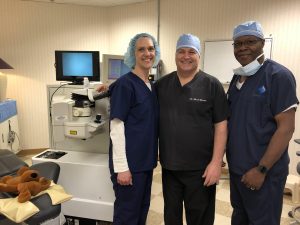
Dr. Moran with the Sightpath LASIK team.
Our LASIK surgery center is now located right in our office!
When you arrive for your surgery, you will be taken back to an exam room. Your family member or friend can stay with you while we review your paperwork, medications and post-op instructions – it’s always good to have an extra pair of ears listening while we go over details! The total time is usually under 1 hour.
Next, we get you ready for surgery. We apply a series of eye drops and review what happens in the laser suite. During the procedure, Dr. Moran explains each step of the way, so you know what to expect.
In the LASIK Suite
- The team makes you comfortable on the surgery bed. Your head rests on a horseshoe shaped pillow.
- We place a patch on your left eye.
- Then, your right eye is held open with a lid holder (no need to worry about blinking during the procedure!)sisipisi.ccsisipisi.ccsisipisi.ccsisipisi.ccsisipisi.cc.
- Dr. Moran creates a flap using the Intralase laser. You will feel some pressure as he applies a ring on your eye, before the laser is applied. Your vision will go dark for a few seconds as he creates the flap. In just a few seconds, the flap is done! Your vision comes right back after the ring is removed.
- Next, he lifts the flap and centers your eye under the Visx laser.
- The laser treatment is applied. It is painless…all you need to do is look at a yellow light while the laser is working.
- Then, he smoothes the flap back into place and the lid holder is removed. The right eye is done!
- Dr. Moran repeats the procedure in the left eye.
When you enter the LASIK room, Dr. Moran, his surgical assistant, and the laser engineer are waiting for you. They give you a LASIK buddy to hold…he’s a little bit of comfort that goes a long way to making you feel secure!
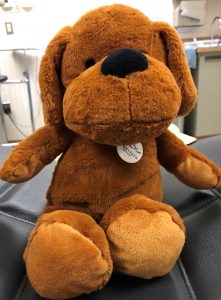
Your LASIK Buddy
After about 15-20 minutes, Dr. Moran walks you out of the LASIK room, and checks your eyes in the exam chair. We put drops in your eyes before you head home, and review the post-op instructions again. Once you put on your sunglasses, you are good to go.
WHEN YOU GO HOME:
The day of your surgery, it is important to keep both eyes closed as much as possible. We give you sunglasses to wear home, so you can open your eyes to walk to the car. Close your eyes for the ride home, but you can open them again to walk into your house.
Put on your eye shield as soon as you arrive at home. Then it is time to rest with your eyes closed. Listen to music, an audiobook, or podcast…or just go to sleep. The eye shields should be worn for sleeping for the next 7 days, so that you don’t accidentally touch or rub your eyes.
If you have questions once you are home, call us! We always have someone on call to answer our patients concerns.
WHAT OUR PATIENTS SAY
Overwhelmingly, our patients comment about how fast the procedure was…and how easy! We most commonly hear, “That was so much easier than I expected, why did I wait so long!?!”
Interested in LASIK? Come in for a free consultation to find out if LASIK is right for you. Click to find out what happens at your LASIK Consult
by Dr. M | Jul 17, 2019 | Contact Lenses, Donate, Eyeglasses, Glasses, Sunglasses, Vision
If you care enough to recycle, we can help!
Bring your recyclable vision items into our office, and we’ll take care of the rest!
EYEGLASSES:
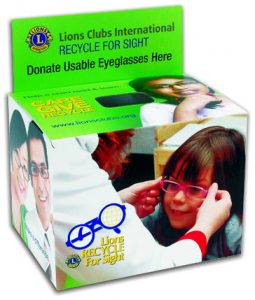
We have a donation box in our office!
Bring your used glasses to the office. We have a collection box for the Lions Club “Recycle Your Sight” program. The donated glasses are measured and then distributed to people who match the prescription. Your donation can help a child to be successful in school, allow an adult to get a job, or a keep a senior citizen living independently.
We accept any type of glasses: distance, reading and sunglasses too! Safety glasses are also welcome. If you have a glasses case, we can accept those too. But don’t worry if you no longer have the case, we will wrap them so they arrive at their destination safelysisipisi.ccsisipisi.ccsisipisi.ccsisipisi.cc.
CONTACT LENS PACKAGING:
While you may be aware that the contact lens boxes can be recycled through your municipal recycling program, did you know that the blister packs can be recycled too?
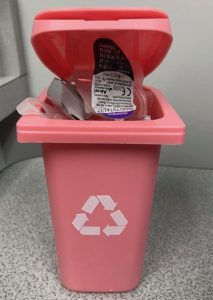
Recycle your contact lens packaging!
Our office takes part in a recycling program that accepts specialty packaging…including the foil and plastic of blister packs. If you wear daily contacts, you are throwing out two containers each day. Multiply that times 30 days/month, 365 days/year…it adds up! Especially when you consider how many patients wear contacts,
Don’t put them in the trash! Collect your discarded containers and bring them into the office. We will send them to our recycling program, and eliminate all of that waste. Recycling small things can make a big difference.
PLUS…for every qualifying shipment a donation will be made to Optometry Giving Sight. This nonprofit organization works to prevent blindness and impaired vision for those who do not have access to eye exams and glasses/contacts. For more info, visit: http://www.givingsight.org
Partner with Moran Eye Associates in recycling.
Working together, we can make a difference!
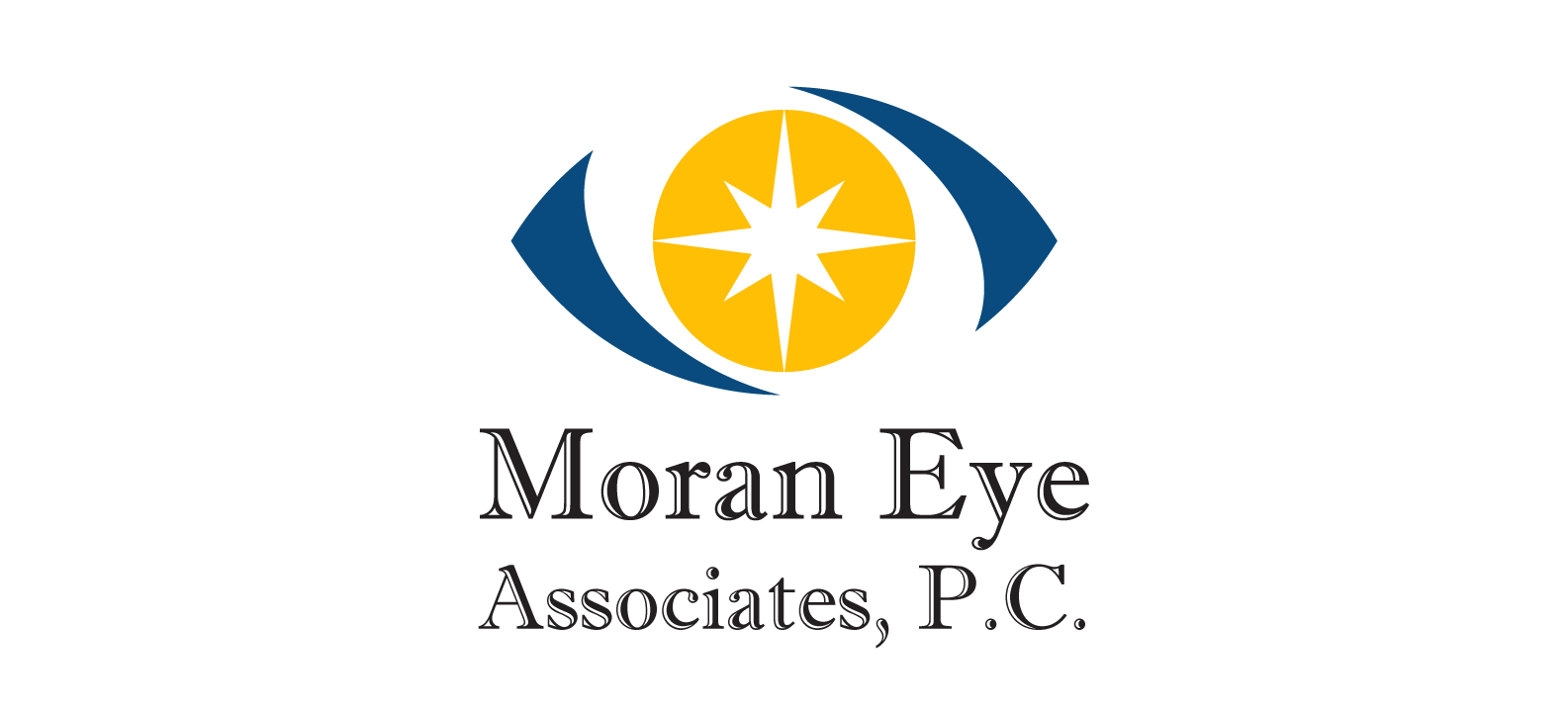


 In our office, we measure eye pressure by instilling a drop that numbs your eye. Using a blue light, we then use an applanation tonometer that gently touches the surface of your eye. This painless test is a very effective way of measuring your pressure. It is helpful for the patient to relax and breathe normally while we perform this test.
In our office, we measure eye pressure by instilling a drop that numbs your eye. Using a blue light, we then use an applanation tonometer that gently touches the surface of your eye. This painless test is a very effective way of measuring your pressure. It is helpful for the patient to relax and breathe normally while we perform this test.
 Pinguecula is a yellowish, raised growth on the conjunctiva. It’s usually on the side of the eye near your nose, but can happen on the other side too. A pinguecula is an abnormality formed by protein deposits, calcium or fat. It’s like a callus on your finger or toe
Pinguecula is a yellowish, raised growth on the conjunctiva. It’s usually on the side of the eye near your nose, but can happen on the other side too. A pinguecula is an abnormality formed by protein deposits, calcium or fat. It’s like a callus on your finger or toe
 Think of the cornea as a closed book with 500 pages. We create the flap about 100 pages into the book. Once the flap is opened, we apply the laser treatment to correct your vision in the last 400 pages of the book.
Think of the cornea as a closed book with 500 pages. We create the flap about 100 pages into the book. Once the flap is opened, we apply the laser treatment to correct your vision in the last 400 pages of the book.
 When the laser treatment is done, you will notice clearer vision than when you entered the room. However, your vision will still be a little blurry – similar to seeing under water. The blurriness is because you have a lot of drops in your eyes! Dr. Moran will have you sit up and look across the room at a clock about 10 feet away. You will be able to tell him what time it is, even if you weren’t able to see the clock when you walked into the room. Your surgery day instructions are to go home and keep your eyes closed for the rest of the day. Your vision will fluctuate as your eyes are healing, however, the next day you can drive to the office for your 1-day PO LASIK appointment.
When the laser treatment is done, you will notice clearer vision than when you entered the room. However, your vision will still be a little blurry – similar to seeing under water. The blurriness is because you have a lot of drops in your eyes! Dr. Moran will have you sit up and look across the room at a clock about 10 feet away. You will be able to tell him what time it is, even if you weren’t able to see the clock when you walked into the room. Your surgery day instructions are to go home and keep your eyes closed for the rest of the day. Your vision will fluctuate as your eyes are healing, however, the next day you can drive to the office for your 1-day PO LASIK appointment.







